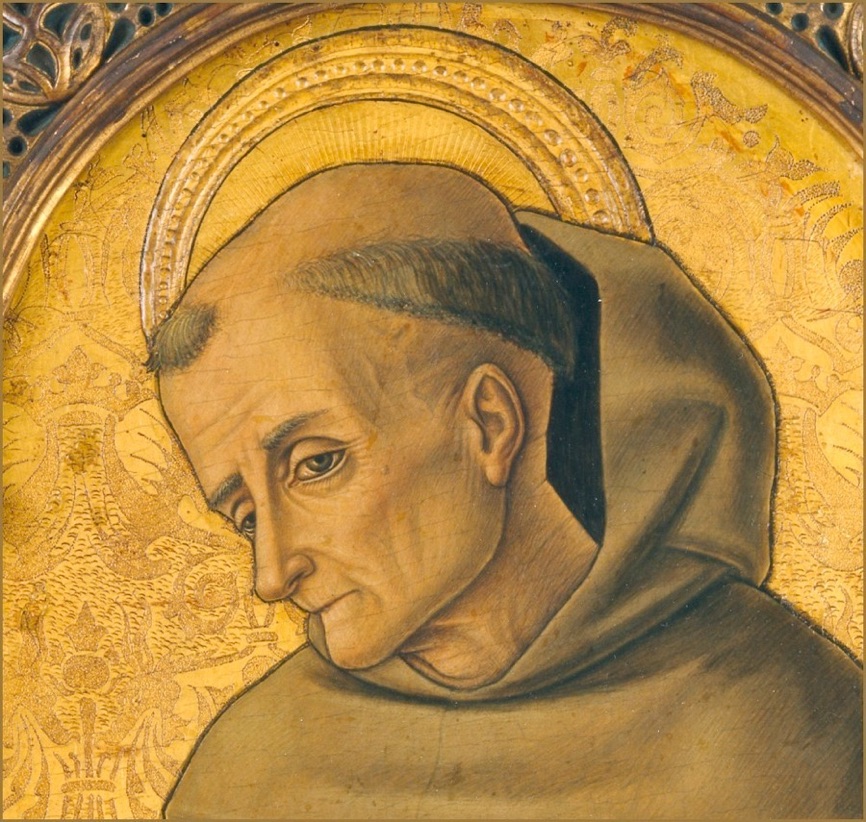The Digitalisation Project Castle Huis Bergh is the intellectual property of the Stichting Musick’s Monument. Ing Hans Meijer was responsible for the technical realisation; Dr Willem Kuiper for the scholarly input. Thanks are also due to the Anjer Cultuurfonds Gelderland; the Stichting de Verenigde Stichtingen “De Armenkorf” in Terborg and “Het Gasthuis te Silvolde”; Mrs P. Tijdink-Hermsen; Mrs L.J.C. Meijer-Kroonder; and the Giese family.




Panel
Crivelli, Vittore (ca. 1440-1501/2)
Italy, Venece
St.Bernardinus of Siena 1481
This portrait of Bernardine of Siena was originally one of the seventeen parts of an altarpiece, a so called polyptych, made in 1481 for the Italian Euffriducci family. The different parts were sold separately, two of them in 1925 to Huis Bergh: portraits of Saint Bernardine of Sienna and Saint Anthony of Padua. We can identify Bernardine by his emancipated appearance and his flaming shield carrying the Greek letters YHS that spell the beginning of the name ‘Jesus’.
The hand of the artist Crivelli is visible in the use of stucco details: the halo surrounding the saint’s head, the ornamentation of the shield and the knobs on the book he is holding. Normally, haloes were made by applying discs of gold leaf on a panel and pressing stamps on them. Crivelli, however, used stucco for the halo instead of gold leaf and stamps. Note how he did use stamped gold leaf on the background of the portrait. In Crivelli’s time, books like this - probably a bible - had knobs on the cover for a reason. They protected the usually very richly decorated and therefore vulnerable cover when the book was lying on the table.
H.Bernardinus van Siena (8 sept. 1380- 20 mei 1444)
Vicaris-generaal der Fransiscaner Orde, voerde weer de strengste observatie van de kloosterregels in.
Venetiaanse schilderkunst.
Susan Legouix: Crivelli vervaardigde het altaarstuk in 1481 voor een kapel van de familie Euffriducci in de Fransiscaner kerk te Fermo (Adriatische zee). Lotgevallen daarna zijn eeuwenlang onbekend. In de 19e eeuw deel van de collectie der familie Vinci te Fermo. In 1989 verkocht graaf Giuseppe Vinci de delen ervan (17 stuks). Nu wereldwijd verspreid.
Vijf stuks in het museum te Philadelphia (collectie Willstach), drie stuks in de Sam.H. Cresscollection (Washington National Gallery?). In Victoria en Albert Museum te Londen. Een stuk in het Lindenarimuseum te Altenburg.

